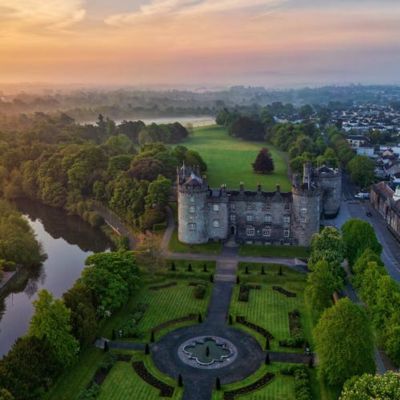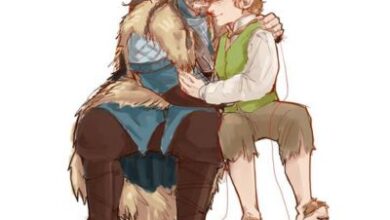
When people search for Gildare, they often mean Kildare, one of Ireland’s most historic and culturally rich counties. Located in the eastern province of Leinster, Kildare—sometimes spelled “Gildare” in searches—is famed for its ancient religious heritage, equestrian traditions, and modern attractions like designer shopping outlets and vibrant festivals. Just a short distance from Dublin, it is a county that blends the ancient and the modern, the spiritual and the recreational, in ways that make it one of Ireland’s most fascinating destinations.
In this detailed guide, we will explore the history, geography, attractions, culture, and visitor tips for Gildare (Kildare), providing you with everything you need to know for your travels, studies, or general curiosity.
The Meaning and Origin of Gildare (Kildare)
The name “Kildare” comes from the Irish Cill Dara, meaning “Church of the Oak.” It is deeply tied to St. Brigid, one of Ireland’s patron saints, who founded a monastery here in the 5th century under the shelter of an oak tree. This symbolic beginning laid the foundation for the town and county’s identity as a center of spirituality, culture, and heritage.
The “Gildare” spelling is a common variation or misspelling, but the true root remains Cill Dara. Understanding this helps highlight how the county has always been associated with resilience, growth, and a blending of natural and spiritual elements.
Early History of Gildare
Kildare has been a center of human activity for centuries. The establishment of St. Brigid’s monastery around 480 AD marked a turning point, creating a hub of learning, faith, and pilgrimage. The monastic settlement flourished, attracting scholars and pilgrims from across Ireland and beyond.
During the Norman invasion of the 12th century, Kildare came under the control of powerful families like the Fitzgeralds, also known as the Earls of Kildare. Their influence shaped much of the county’s political and cultural landscape, with castles and fortifications still standing as reminders of their legacy.
By the medieval era, Kildare had become one of the key counties in Leinster, with its fertile lands supporting agriculture and trade. Its unique position between Dublin and the rest of southern Ireland made it both a defensive stronghold and a vital hub for commerce.
Geography and Accessibility
County Kildare lies just southwest of Dublin, making it one of the most accessible counties for both international visitors and domestic travelers. With excellent road and rail links, a trip to Gildare is just 30–60 minutes from the Irish capital.
The landscape is characterized by flat, open plains—particularly the Curragh, which is famous for horse breeding and training. Rivers like the Liffey, Barrow, and Boyne run through the county, while towns such as Naas, Newbridge, Maynooth, Athy, and Kildare Town itself form vibrant population centers.
Its geography makes it not just historically significant, but also visually impressive, with wide plains perfect for racing and agriculture, and smaller villages preserving Ireland’s rural charm.
Equestrian Culture: The Heart of Gildare
If one word could summarize Gildare, it would be horses. Kildare is often called the horse capital of Ireland.
- The Curragh Plains are synonymous with Ireland’s racing industry. Horses bred and trained here are internationally renowned.
- The Irish National Stud in Tully is both a working stud farm and a major tourist attraction, showcasing thoroughbred breeding alongside beautiful gardens.
- Punchestown Racecourse is the home of national hunt racing, drawing huge crowds for annual events.
- Curragh Racecourse is the premier flat racing venue in the country, hosting classic races such as the Irish Derby.
The equestrian industry is not just a sport in Kildare—it is part of the county’s identity, economy, and pride.
Attractions in Gildare
A trip to Gildare is incomplete without exploring its many attractions, each highlighting a different facet of its heritage and modern lifestyle.
1. St. Brigid’s Cathedral and Round Tower
A historic site dedicated to Ireland’s patron saint, this cathedral and its round tower offer both religious significance and panoramic views of the town.
2. Kildare Village
This designer shopping outlet attracts visitors from across Ireland and beyond. Offering high-end brands at discounted rates, it has become a modern landmark in the county.
3. The Irish National Stud & Japanese Gardens
Combining equestrian excellence with horticultural beauty, the Japanese Gardens are internationally celebrated as one of the most perfect gardens outside Japan.
4. Castletown House
Located in nearby Celbridge, this 18th-century Palladian mansion showcases Ireland’s grand architectural heritage.
5. Maynooth University and Carton House
Maynooth adds an academic and cultural layer to the county, with its historic university and Carton House estate offering history and leisure.
6. The Curragh and Racecourses
Even if you are not a horse racing enthusiast, the atmosphere on race days is electrifying and worth experiencing.
7. Athy Heritage Centre
This museum celebrates local history and includes exhibitions about Antarctic explorer Ernest Shackleton, who was born in the area.
Cultural Heritage and Festivals
Kildare’s cultural identity is a mix of ancient spirituality, Norman influences, and modern Irish life.
- St. Brigid’s Day (February 1st): Celebrations honor Ireland’s beloved saint, with traditions like weaving St. Brigid’s crosses.
- Kildare Derby Festival: A summer highlight filled with music, art, and community events surrounding the Irish Derby.
- Punchestown Festival: A five-day racing festival attracting international attention.
Traditional pubs, local food festivals, and music sessions also bring the county to life throughout the year.
Activities and Day Trips in Gildare
For visitors, Gildare offers more than history and horse racing:
- Shopping: Beyond Kildare Village, the towns of Newbridge and Naas provide boutique shopping and local crafts.
- Gardens: Explore the Japanese Gardens, Burtown House & Gardens, and other estate gardens.
- Walking & Cycling: Trails along the Grand Canal and Barrow Way give peaceful countryside experiences.
- Heritage Trails: The Kildare Monastic Trail and Norman Way link historic sites for history lovers.
Practical Travel Tips
- Getting There: Kildare is 30–60 minutes by train or car from Dublin. Trains stop in key towns like Newbridge and Kildare Town.
- Best Time to Visit: Spring and summer are ideal, especially for gardens and racing festivals. Autumn offers colorful landscapes with fewer crowds.
- Accommodation: Choose from countryside B&Bs, historic estates like Carton House, or modern hotels in Naas and Newbridge.
- Food: Local pubs and restaurants serve traditional Irish fare alongside modern dining options.
Why Gildare Should Be on Your Travel List
From its sacred beginnings under St. Brigid’s oak tree to its modern-day reputation as Ireland’s equestrian heartland, Gildare (Kildare) offers a unique blend of history, culture, leisure, and modern charm. Whether you are interested in racing, shopping, history, or simply enjoying the Irish countryside, Kildare has something unforgettable for every traveler.
As we celebrate the richness of this county, it is worth noting how destinations like Gildare capture the soul of Ireland itself—ancient roots, proud traditions, and a welcoming embrace for visitors worldwide. For more inspiring travel content and cultural explorations, visit my blog Newsta
1. What is Gildare?
Gildare, often spelled Kildare, is a county in eastern Ireland known for its equestrian culture, historic sites, and proximity to Dublin.
2. Why is Gildare famous?
Gildare is famous for its horse racing industry, the Irish National Stud, the Curragh plains, and attractions like Kildare Village shopping outlet and St. Brigid’s Cathedral.
3. How far is Gildare from Dublin?
Gildare is only about 30–60 minutes from Dublin by car or train, making it a popular day-trip destination.
4. What are the best attractions in Gildare?
Top attractions include the Irish National Stud and Japanese Gardens, Kildare Village, St. Brigid’s Cathedral, Castletown House, and the Curragh Racecourse.
5. When is the best time to visit Gildare?
The best time to visit is from spring through autumn, when gardens are in bloom and major racing festivals take place.
6. What festivals take place in Gildare?
The Punchestown Racing Festival, the Kildare Derby Festival, and St. Brigid’s Day celebrations are among the county’s most popular events.
7. Is Gildare good for shopping?
Yes, Kildare Village is one of Ireland’s premier designer shopping outlets, drawing both tourists and locals.
8. Can I explore Gildare without a car?
Yes, regular trains and buses from Dublin and other cities make it easy to explore Gildare’s towns and key attractions.
Thanks for read our article if you want more like this kind of article visit our site Newsta, and comment us. We provide authentic & comprehensive information to our readers.



